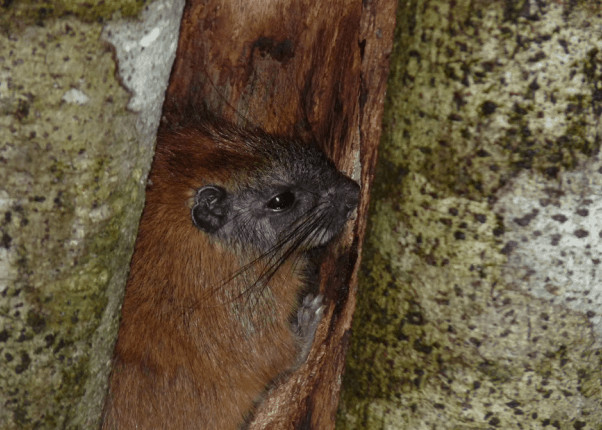Costa Rica has reached a new milestone in its mammalian fauna catalog. The list of mammal species that live in Costa Rica reached 250 this month, after scientists spotted a rufous tree rat (*Diplomas labilis*) in the country’s south. This discovery adds to Costa Rica’s biodiversity records. The rufous tree rat, known for its spiked fur (earning it the Spanish name “*ratón espinoso*”), was previously thought to range only from central Panama south to Colombia. Researchers spotted the rodent in La Palma, located in the Osa Peninsula of Costa Rica.
The sighting occurred when a group of scientists noticed the rat in a tree hole during a biodiversity survey. One of the researchers climbed a nearby tree to photograph the animal, providing evidence for their findings. The discovery was published in the biodiversity data journal Checklist, a peer-reviewed, open-access journal focusing on biodiversity research. This publication adds the finding to the scientific record, allowing researchers worldwide to access this information.
José Ramírez, the paper’s lead investigator, suggests that the rufous tree rat has likely always been present in Costa Rica but was overlooked until now. Ramírez states, “Nocturnal and highly arboreal mammals, such as the rufous tree rat, are often missed during biodiversity surveys due to their inaccessible habitat and a general absence of arboreal trapping.”
This discovery adds to Costa Rica’s known biodiversity. According to the Costa Rica Tourism Board, the country is home to about 5% of the world’s biodiversity, despite covering only 0.03% of the planet’s surface.
The addition of the rufous tree rat to Costa Rica’s mammal list indicates the need for continued research and conservation efforts. It suggests that other species may yet be undiscovered in the country’s forests and ecosystems. The Osa Peninsula, where the rufous tree rat was spotted, is a biodiverse region in Costa Rica. It contains Corcovado National Park, a significant part of Costa Rica’s national park system, which hosts a variety of wildlife.
For expats and travelers in Costa Rica, this discovery provides another example of the country’s diverse fauna. It demonstrates that even in well-studied areas, new species can still be found. The discovery of the rufous tree rat in Costa Rica also highlights the importance of habitat preservation. As these species rely on forest canopies, it underscores the need for conservation efforts and sustainable eco-tourism practices.
Organizations like Osa Conservation work to protect these habitats. Their efforts become more relevant with each new species discovery, as it indicates the potential for further unknown biodiversity in the region. For those living in or visiting Costa Rica, this discovery serves as a reminder of the country’s natural diversity. It shows that even in well-studied areas, nature can still reveal new information.
As Costa Rica adds this new species to its list, it maintains its position in biodiversity research and conservation. For the scientific community, conservation efforts, and nature observers, the discovery of the 250th mammal species in Costa Rica represents a notable addition to the country’s known fauna.

